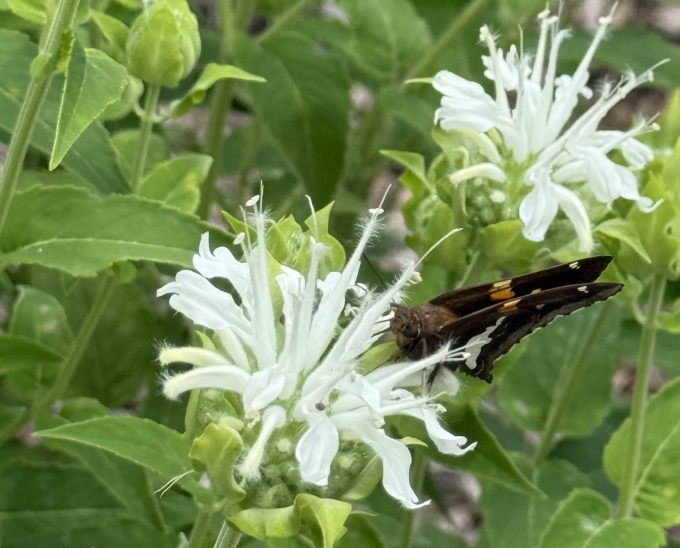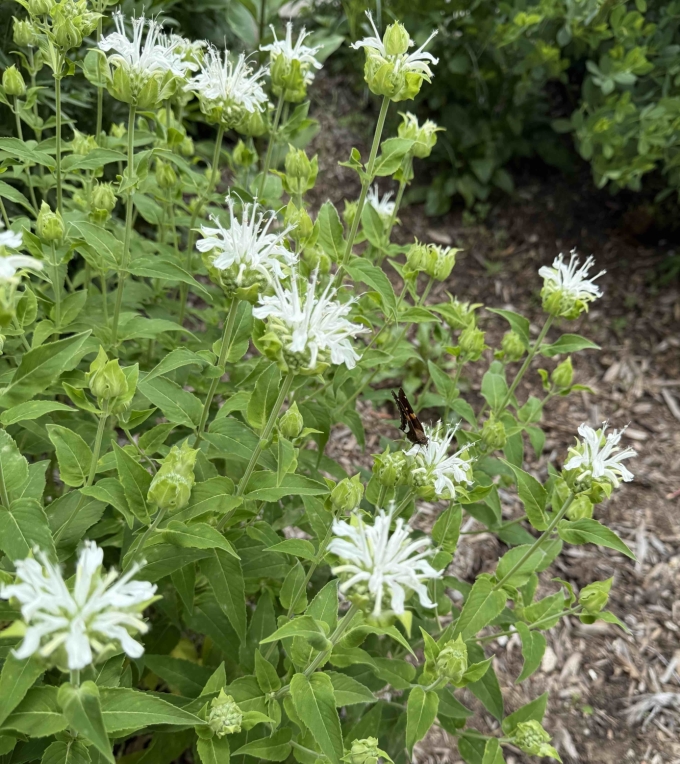Common Name: White Wild Bergamot, White Bee Balm
Family: Lamiaceae
Plant Type: Herbaceous Perennial
Native Range: Central and eastern North America, including Nebraska (white-flowered form of the native M. fistulosa)
Hardiness Zones: 3–9
Height: 2.0 to 4.0 feet
Spread: 1.5 to 3.0 feet
Bloom Time: Late Spring to mid summer (Late May - Beginning of July in Nebraska)
Bloom Description: Clusters of tubular, white to creamy-white flowers atop square stems, surrounded by leafy bracts
Sun Exposure: Full sun to light shade
Water Needs: Medium
Soil Preference: Well-drained soils; tolerates sandy, loamy, or clay soils
Maintenance Level: Medium
Suggested Use: Prairie plantings, pollinator gardens, borders, naturalized areas
Attracts: Bees (especially bumblebees), butterflies, hummingbirds
Tolerates: Drought, clay soils, deer, rabbits
Notable Features: Aromatic foliage, mildew-resistant compared to other Monarda, excellent pollinator plant, native to Nebraska
Nebraska Growing Notes:
White Wild Bergamot is a beautiful, native wildflower that performs reliably across Nebraska’s prairies and gardens. Like the more common lavender-flowered M. fistulosa, it thrives in full sun and well-drained soils, tolerating Nebraska’s heat, drought, and clay soils once established.
The white flowers offer a softer, more subtle look than the typical lavender, making it especially attractive in formal or restrained designs, while still providing abundant nectar for pollinators.
It can spread by rhizomes and seed, forming attractive colonies over time, but is generally easy to manage. To prevent powdery mildew and keep plants tidy, ensure good air circulation and consider cutting back after bloom.
Landscape Use:
Excellent for prairie-style gardens, pollinator beds, naturalized plantings, and native meadows. Pairs beautifully with grasses, Echinacea, Rudbeckia, Solidago, and Liatris. Its soft white blooms provide a nice contrast against bolder colors in summer gardens.
Caution:
Non-toxic and wildlife-friendly. Foliage is aromatic and can deter deer and rabbits. Can spread, so occasional thinning may be needed in formal settings.
Garden Locations:
Sources:


